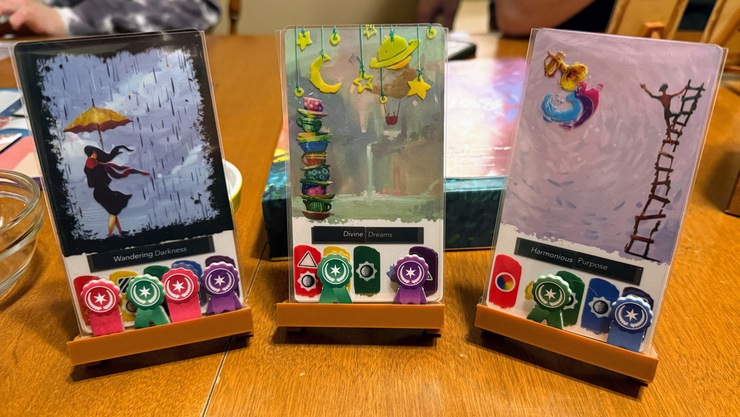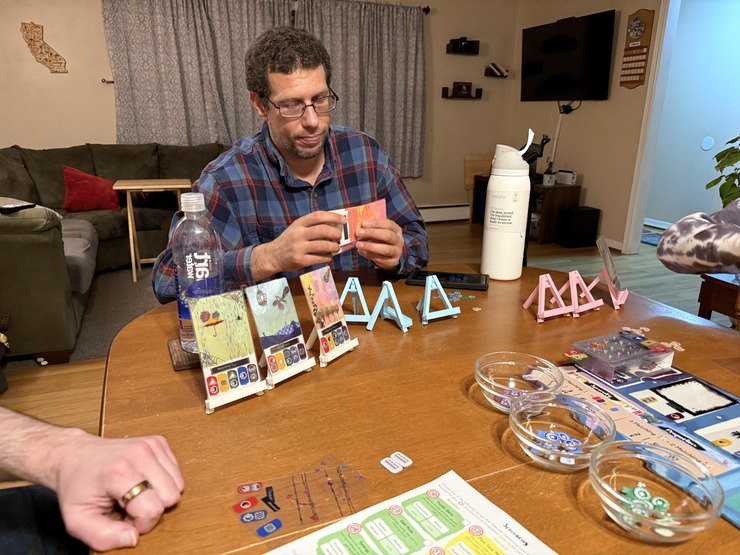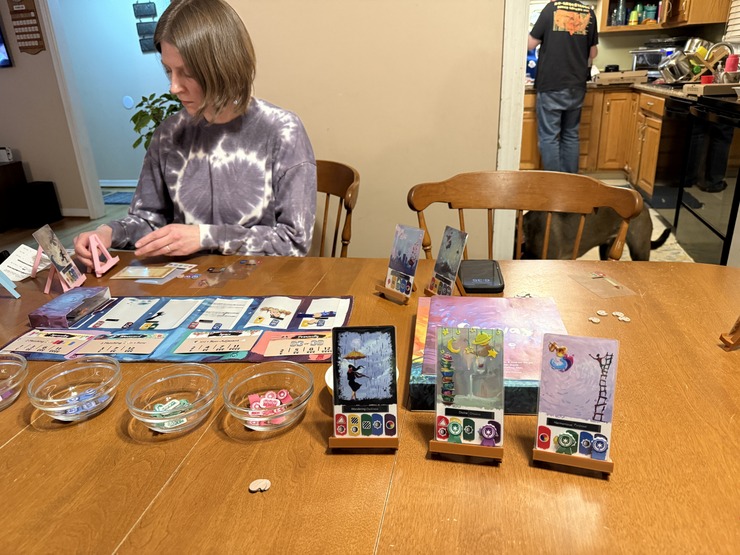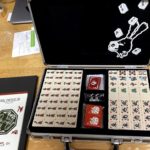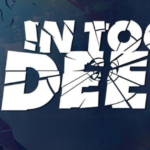After working on recreating a famous woodcut in 3D (remember Hokusai? He’s back — in pog form!), it only made sense that Saturday’s family game night would be Canvas, the game where every player creates works of art — in plastic.
This is the second time we played. I didn’t blog about the first time we played, because of a terrible, terrible oversight. See, when I bought the game for my daughter and her family, I’d assumed that it would come with cardboard or plastic easels to display the art. It didn’t. I guess that was just for the Kickstarter backers.
Well, I have a 3D printer. I printed over a dozen plastic easels the very next day, and now — now — I can write about it.
Canvas is a set-collection and layering board game where players create stunning works of art by strategically stacking transparent cards to fulfill scoring objectives, combining aesthetics with tactical decision-making.
Before each round, everyone agrees on a set of criteria that will be used to judge the finished works of art. The manual gives several options, along with minimum scores necessary to consider that option completed. It even comes with a list of achievements, including one where you have to beat the game’s creators.
Play continues with people choosing a transparent overlay from a selection of five; the oldest one is free, but people can spend palette tokens to get newer ones. Each overlay has an art element, half of a title, and scoring symbols. Three overlays slid into a plastic sleeve with a cardboard back form an artwork, with the two title halves forming the title of the work.
The visible symbols at the bottom of the completed work are compared against the chosen criteria for scoring. For example, having all five colors, or all six symbols, or three of the same symbol in a row, etc. Easier challenges have easier criteria; harder challenges require players to be very strategic about which criteria they try to score.
It’s an easy game to play — just keep choosing overlays, get three, sleeve them and score them. Having to compete with other players to choose overlays that will score the best adds a transparent layer of strategy. Everyone has the same criteria they are trying to score, after all, but if you haven’t been stingy with your palette tokens, you may have to let your chance at a sweet bit of art slide away to the person next to you.
It’s a fun, quick game, probably the quickest game we brought to the table recently. Highly recommended. Canvas has several expansions, but we’re just playing with the base game.
